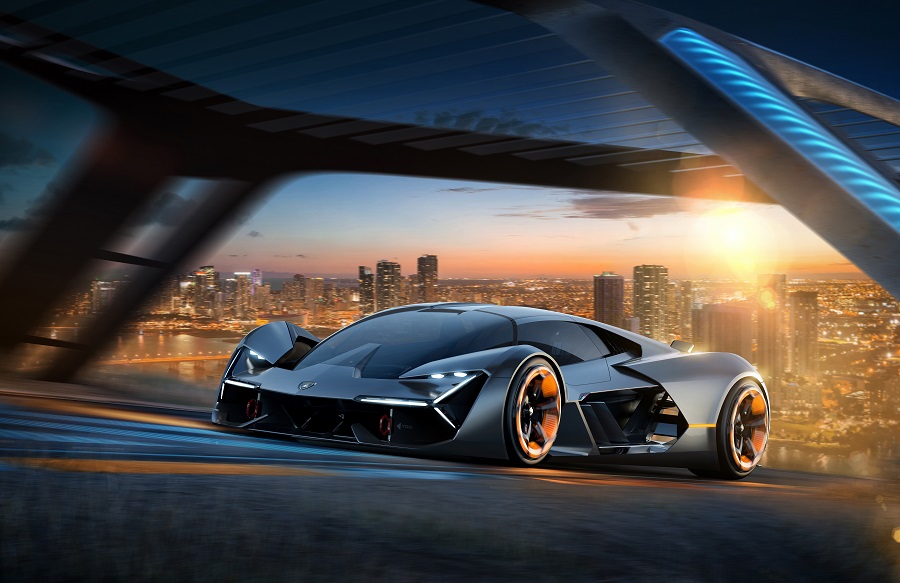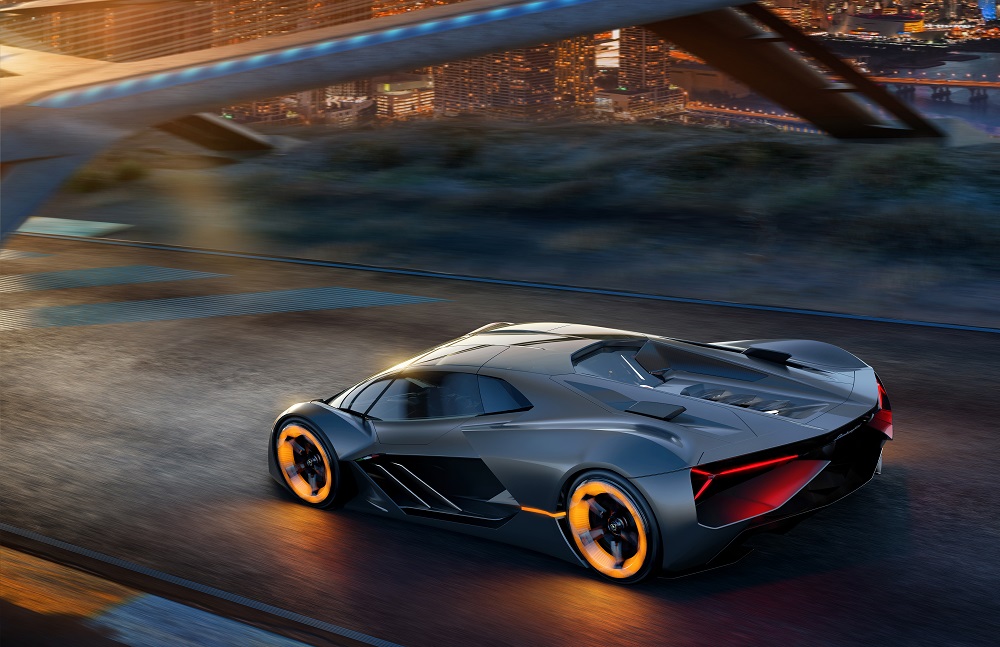The Lamborghini Terzo Millennio Is A Futuristic EV Supercar Without A Battery
The brilliance of the Tesla Model S is that it emphatically demonstrated that an electric car didn't need to look like, well, an overtly electric car. Before the Roadster and the Model S were released, electric vehicles where routinely associated with boring and clunky designs. The Model S, however, proved that it was possible to release a luxury sedan that just so happened to be an EV.
Thanks to the success Tesla saw with the Model S, a number of other automakers have decided to embrace the EV revolution with open arms. Not only are automakers like Ford and GM devoting more and more resources towards EV development, we've even seen high-end automakers enter the fray, with Porsche's forthcoming Mission E being a prime example. As if that weren't intriguing enough, now comes word that Lamborghini may want to get into the EV game as well.
Over the past few months, Lamborghini has been working with MIT to develop technology for a top of the line electric supercar dubbed the Lamborghini Terzo Millennio. It's just a concept for now, but it sounds downright futuristic, with the Italian automaker noting that it envisions the Terzo Millennio expanding the limits of what is possible across five different areas: energy storage systems, innovative materials, propulsion system, visionary design, and emotion.
The energy aspect of the car is particularly interesting as it's envisioned without having a battery. Instead, researchers at Lamborghini and MIT envision a car where the body itself would function as a supercapacitor capable of releasing and storing energy. As to why Lamborghini is exploring such a bold concept in the first place, Mauricio Reggiani, the company's head of R&D, explained that traditional EV batteries are incredibly heavy, which is not something that works well on a supercar. On the other hand, employing a lighter battery pack also has its disadvantages.
Even the best batteries won't work in a supercar, Reggiani said, because they're too heavy and bulky. If the car used only small batteries, so as not to add too much mass, he said, they would get drained quickly and wouldn't provide peak performance for very long.
"If I have a super sports car and I want to go the [race track], I want to go one, two, three laps without having to stop and recharge after every lap," he said.
With respect to the aforementioned supercapacitor, Lamborghini's press release reads in part:
The strategy of creating super sports cars with uncompromising performance generates Lamborghini's motivation to revolutionize the approach to energy storage, moving away from conventional batteries and investigating the potential of supercapacitors to equip the Terzo Millennio.
This is in line with the application of low voltage supercapacitors in the V12 Aventador, which started five years ago. The next logical step is the development of a storage system able to deliver high peak power and regenerate kinetic energy with very limited influence from aging and cycling during the vehicle's life, and with the ability to symmetrically release and harvest electric power. Thus, the collaboration with Prof. Mircea Dinca is aiming to overcome the limits of today's technology and close the gap on conventional batteries' energy density while preserving the high power, symmetrical behavior and the very long lifecycle related to supercapacitor technology.
It also sounds very cool, and MIT's involvement in the project is certainly encouraging, but don't expect to see this car on the road anytime soon. Either way, I think we can all agree that the car's design is downright jaw-dropping.
To this point, additional promo shots of the Terzo Millennio can be seen below.


